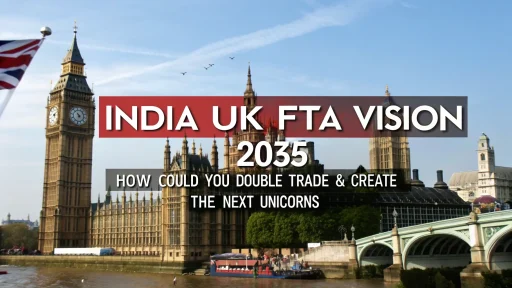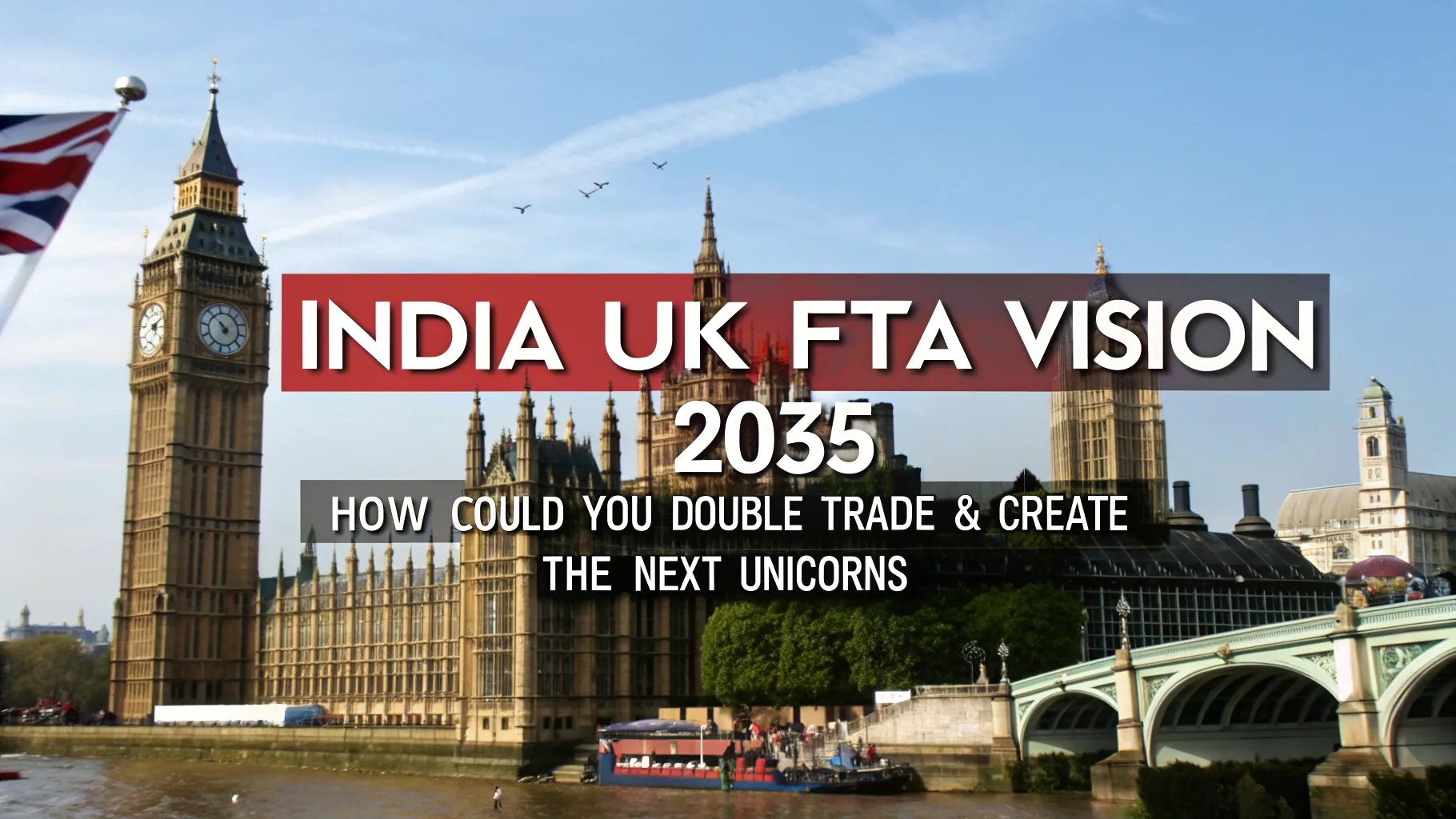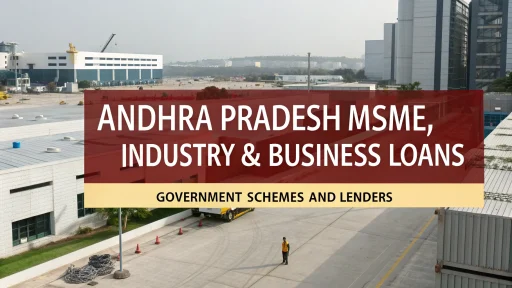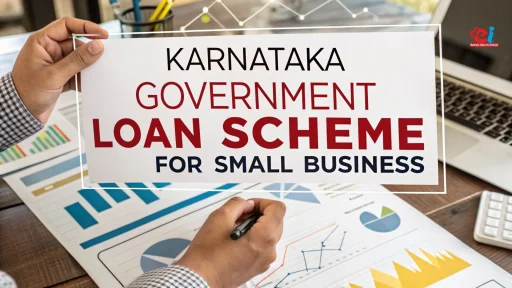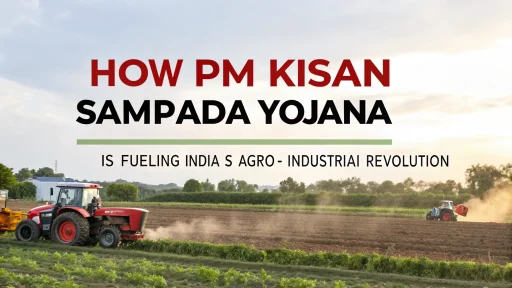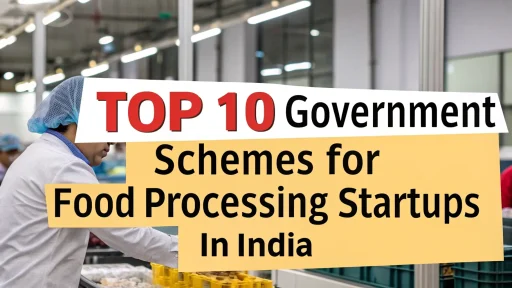India UK FTA have embarked on an ambitious India-UK Vision 2035. They have now set the stage for the revival of a partnership that will unlock transformational growth in trade, technology, and green energy. Vision 2035, which was endorsed by both Prime Ministers in London on the 24th of July 2025, is a roadmap that will help to reshape value chains globally, stimulate innovation and create high-value manufacturing for entrepreneurs and startups.
This in-depth analysis explores how India’s data and the prospects of CETA, which includes a comprehensive economic and trade agreement (CETA), can translate into new million-dollar industrial ventures by 2025.
1. Export Targets Are Increasing Steadily
1.1 Current Baseline and Short-Term Targets
The bilateral trade is now worth USD 56 billion, including both goods and services. This represents a 20% increase over the last three years. The Government of India’s Ministry of Commerce & Industry, Annual Report for 2023-24, shows that exports to the UK totaled USD 34 billion while imports reached USD 22 billion. This was driven by pharmaceuticals and textiles.
Vision 2035: The First Milestone is Not the End
Vision 2035, while CETA sets a goal for 2030 that is ambitious, extends it to 2035: tripling current trade volumes to USD 150 billion. This target is a reflection of the continued growth in goods and services but also includes new flows related to green technology, digital commerce, and defense equipment.
The Joint Economic and Trade Committee meetings (JETCO), the updated Economic & Financial Dialogue, and a Bilateral Investment Treaty will all help to keep this trend on track. They offer startups clarity about tariff schedules and investment protections as well as streamlined dispute resolution.

2. Market Size Opportunities by Sector
Understanding the market size and growth rate of a particular industry is important for entrepreneurs looking to start manufacturing or industrial businesses. Here are six areas where the India-UK relationship shines.
| Sector | India Market Size (by 2025E) | UK Market Size (by 2025E) | CAGR (2025–2030) |
|---|---|---|---|
| Renewable Energy Equipment | USD 15 B | USD 8 B | 12% |
| Advanced Materials & Composites | USD 4 B | USD 3 B | 10% |
| Semiconductor & Electronics | USD 12 B | USD 20 B | 15% |
| Biotechnology & Biomanufacturing | USD 6 B | USD 5 B | 14% |
| Defence & Dual Use Components | USD 5 B | USD 10 B | 11% |
| Critical Minerals Processing | USD 3 B | USD 4 B | 13% |
Source: Government of India, sectoral projections and UK Department for Business and Trade estimations.

2.1 Renewable Energy Equipment
Climate Partnership Vision 2035 is centered on the clean-energy revolution. There are many opportunities in:
- Offshore wind turbine manufacture: India has established an India-UK Offshore Wind Taskforce and aims to install up to 30 GW in offshore capacity by 2030. The domestic manufacturing of blades, turbines and foundations could capture 20 % of the supply chain. This would translate to USD 3 billion in 2025.
- Solar wafer and module production: Indian startups, leveraging the International Solar Alliance (ISA) and UK technology transfer, can establish gigawatt-scale PV module lines to serve both local and international markets, with a forecast of USD 7 billion in 2025.
- Energy-storage system: A collaboration between India’s Central Electricity Regulatory Commission and the UK’s OFGEM standardises battery-testing protocols and grid integration protocols. This will lower entry barriers for manufacturers of lithium-ion batteries and flow batteries. By 2025, the sub-sector will have a combined USD 5 billion opportunity.
2.2 Advanced Materials and Composites
The Technology Security Initiative (TSI), a part of Vision 2035, covers:
- Graphene, nanomaterials, and composites: Through joint R&D, supergroups and catapults, we will be able to accelerate the scale-up for graphene, nanofibers and composites in aerospace, defense, and electronics. Markets: India – USD 1.2 billion, UK – USD 1 billion by 2025.
- Startups can make biodegradable alternatives to polypropylene (PP) and cellulose-based films, with a combined market value of USD 1.8 billion.
2.3 Semiconductors and Electronic
The India UK FTA Connect Innovation Centre incubates joint ventures for 5G/6G components and RFICs. Packaging will also be a focus. The UK’s R&D tax credit for chips and India’s Production Linked Incentive (PLI) for semiconductors will create a USD 32 billion export-import channel by 2025.
The Assembly, Test, and Marking and Packaging (ATMP), near Chennai and Hyderabad, is poised to capture 20 % global fabless packaging demand.
2.4 Biomanufacturing & Biotechnology
The Biomanufacturing Partnership under Vision 2035 will focus on:
- Vaccines, gene therapies and biosimilars are the focus of joint accelerators in health-tech. They aim to set up two biofoundries by 2027. The market size for biosimilars, gene therapy, and vaccines is USD 6 billion by 2025 in India.
- Bio-based materials: Startups that produce microbially-derived plastics and enzymes as well as adhesives, can tap into a combined market of USD 2 billion, which is accelerated through shared IP frameworks.
2.5 Components for Defence and Dual Use
The 10-year Defence Industrial Roadmap opens up a USD 7-billion market for joint production through UK-licensed codevelopment of engines and avionics.
Cybersecurity Hardware: TSI & cyber-governance will collaborate to invite startups to create secure routers and firewalls as well as edge AI appliances. The estimated combined value of these products is USD 1.5 billion.
2.6 Critical Minerals Process
The joint Industry Guild on Critical Minerals of Vision 2035 focuses on:
- India plans to build two refineries for lithium, cobalt and nickel by 2026. Exports of battery-grade chemicals will be fueled by supply chains between the UK and India. Market Opportunity: USD 7 billion in 2025.
- India’s co-located processing centers can serve both markets and unlock USD 1 billion of commodity trade.
For more information, you can check our Handbooks
3. 2025: Million Dollar Startup Playbook
Here are five steps that entrepreneurs can take to maximize the India-UK Vision 2030 opportunities in this sector.
Leverage Government Incentive
- Register for India’s PLI scheme (semiconductors and solar modules, emobility, etc.) to secure UK Innovate UK grant funding for joint R&D.
- Ask for market entry support at the UK Trade & Investment desk in New Delhi.
Position for Export Excellence
- To accelerate UK acceptance, aim for OECD Good Manufacturing Practices and EU CE Markings.
- Working capital guarantees can be obtained from the Export Credit Guarantee Corporation and UK Export Finance.
Form Cross-Border Partnerships
- Join the UK-India Research & Innovation Corridor for co-development of prototypes and then licensing IP to scale up in both geographical areas.
- Participate in India UK Innovation Hubs — eco-systems that combine accelerators, incubators and catapult centers.
Build Resilient Supply Chains
- Negotiate offtake agreements with UK battery and steel manufacturers.
- Take advantage of digital supply chain platforms that are interoperable with the Digital Public Infrastructure frameworks in both countries.
Investing in Talent & Skills
- Use the India-UK Green Skills Partnership as well as transnational education initiatives in order to hire engineers who have been trained using UK curricula.
- Sponsor dual-degree programs or branch campuses at UK universities to create a pipeline of professionals.
4. Government Backing & Regulatory Framework
Policy Instruments
- Comprehensive Economic and Trade Agreement
- Tariff phase: elimination of 80% of goods upon signing; 99% within five years.
- Liberalisation of the service sector: increased market access to professional, financial, digital, and telecom services.
- Double Taxation Avoidance Treaty Enhancement
- Withholding tax on dividends and interest is simplified. This is vital for manufacturing companies with UK equity partners.
- Bilateral Investment Treaty (BIT) (in negotiation)
- UNCITRAL Rules provide for guarantees against expropriation and repatriation rights as well as a dispute resolution mechanism between investor-states.
Financial Flows
- British International Investment and UK-India Development Capital Investment Partnership are investing USD 5 billion by 2027 in green and technology startups.
- The Indian National Investment and Infrastructure Fund, or NIIF, has allocated USD 2 billion to joint UK-India clean energy and infrastructure projects.
For more information, you can check the Project Report
5. Niir Project Consultancy Services
Niir Project Consultancy Services is a leading consultancy in the industry that helps entrepreneurs navigate these opportunities.
- Market Survey or Detailed Techno-Economic Reports: NPCS provides in-depth analyses of the market, which will give you clarity about demand, pricing, and competition.
- Comprehensive Processes & Plant Layouts: The reports include manufacturing processes, raw materials, plant layout,s and detailed financial forecasts.
- Feasibility assessment: NPCS expert insights can help entrepreneurs evaluate the viability of establishing new industries or businesses.
6. Forecasting Growth 2025–2030
| Sector | 2025E Market (USDB) | 2030F Market (USDB) | CAGR (%) |
|---|---|---|---|
| Renewable Energy Equipment | 23 | 40 | 12 |
| Advanced Materials & Composites | 7 | 12 | 10 |
| Semiconductor & Electronics | 32 | 65 | 15 |
| Biotechnology & Biomanufacturing | 11 | 20 | 14 |
| Defence & Dual Use Components | 15 | 25 | 11 |
| Critical Minerals Processing | 7 | 12 | 13 |
The combined market for these six industries is expected to exceed USD 174 billion in 2030, providing a large headroom for new entry.
7. Conclusion
India-UK Vision 2035 represents more than just a diplomatic statement. It is a blueprint for prosperity shared by both countries. In the coming years, there will be unprecedented opportunities worth millions of dollars in areas such as green manufacturing, semiconductors and life sciences, defense, and critical minerals. Entrepreneurs are in a great position to take advantage of this opportunity with the help of NPCS and robust policies like CETA, PLI incentives, and joint R&D Corridors. 2025 is the year to launch your venture: By aligning your strategy with Vision 2035 targets, you will be able to secure an early-mover advantage in two of the most dynamic markets.
For more information check out our YouTube channel
FAQ
1. What is India-UK Vision 2030?
India-UK Vision 2035, a Comprehensive Strategic Partnership, was endorsed by the two Prime Ministers of India and UK on 24 July 2025. It sets long-term goals in trade, technology and climate change, defense and education, as well as people-to-people connections.
2. What is the impact of CETA on exports?
Under the Comprehensive Economic and Trade Agreement, tariffs on nearly 99% of Indian goods exported to the UK will be eliminated, and duties on UK exports to India will be significantly reduced, facilitating a goal to double bilateral trade to USD 120 billion by 2030.
3. What sectors will offer the most opportunities to startups in 2025?
The key sectors are renewable energy equipment and advanced materials. They also include semiconductors & electronics, biomanufacturing components, defence components, as well as critical minerals processing. Each of these is expected to grow by double digits annually until 2030.
4. What are the incentives available to manufacturers?
Indian startups have access to Production Linked Incentive schemes (PLIs) for semiconductors and solar modules. UK counterparts provide Innovate UK grants and tax credits as well as funding lines through British International Investment.
5. How can NPCS assist new entrepreneurs?
Niir Project Consultancy Services (NPCS) prepares detailed market-survey-cum-techno-economic feasibility reports covering manufacturing processes, raw materials, plant layout, and financial projections–enabling entrepreneurs to assess the feasibility and chart a clear roadmap for industry setup.
Your startup can capture its first million-dollar opportunity in 2025 by aligning your strategy with the India-UK Vision 2035 pillars and leveraging the Government of India’s Data.
Sources: We rely on official Government of India reports and industry reports for our data and analyses. India’s Commerce Ministry reports on exports, while PIB releases highlight key policies and accomplishments. These sources guarantee that the information is accurate and reflects India’s goals, market size, and policy initiatives for 2025

